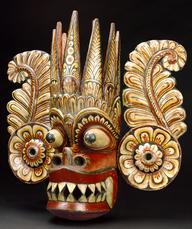





Three small 'Friendly' needles, used in Shonoshin therapy, a non-invasive form of acupuncture developed for young children, from the surgery of a British practitioner c.1996, unsigned, Japanese, 1980-1985.
'Friendly’ needles such as these are used within Shonoshin therapy. They are part of a range of equipment used so children are not intimidated. Shonoshin is non-invasive acupuncture for children. In Traditional Chinese Medicine (TCM), acupuncture needles are normally inserted into certain points on the skin. This unblocks the flow through the body of a life force known as qi (chi). TCM practitioners believe qi is essential to wellbeing. During Shonoshin therapy, the skin is scratched with brushes, combs and massage rollers to stimulate the acupuncture points. These heavy steel needles have retractable needle points. They scratch, but do not enter the skin.
Details
- Category:
- Asian Medicine
- Object Number:
- 2002-488
- Measurements:
-
overall each: 59 mm 7 mm, .01kg
- type:
- acupuncture needle
- credit:
- Kelley, R.




